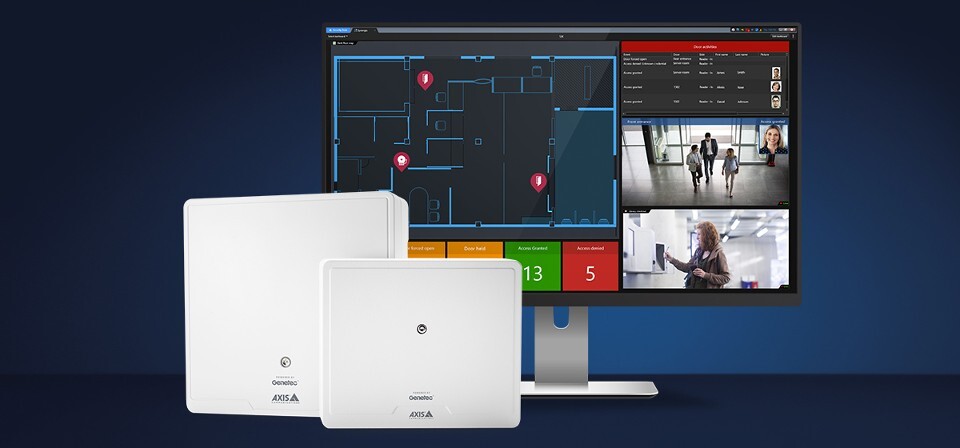
Telecom Infrastructure: The Strategic Advantage in AI-Driven Workplaces
Artificial intelligence has redefined workplace productivity, innovation, and connectivity in just a few years. While AI tools and platforms often take the spotlight, the true enabler of this transformation operates quietly in the background: telecom infrastructure. In the post-AI era, robust, high-speed, and secure networks are not just operational necessities—they are the foundation of competitive advantage.
The Post-AI Workplace: Powered by Connectivity
The post-AI workplace is not defined solely by advanced algorithms but by the seamless flow of data, real-time decision-making, and uninterrupted connectivity. As remote work, cloud collaboration, and AI-driven automation become standard, companies with cutting-edge telecom infrastructure are outpacing their competitors.
AI applications—whether enabling real-time customer insights during sales calls, powering virtual assistants, or facilitating multilingual meetings—rely on high-speed, low-latency networks. A lagging connection can disrupt critical operations, from video conferences to AI-powered analytics, costing businesses time, revenue, and credibility. From smart offices optimizing energy use to hospitals conducting remote diagnostics and retail leveraging facial recognition for personalized experiences, telecom infrastructure is the invisible thread tying these innovations together.

Connectivity as a Strategic Asset
In today’s digital economy, businesses compete not only on products or pricing but on the speed and reliability of their operations. A dropped call or a sluggish cloud platform is no longer a minor inconvenience—it’s a tangible loss of revenue, reputation, and momentum. Bandwidth, uptime, and latency are now measurable assets, servingtips as the currency of digital success.
Emerging technologies like 5G, edge computing, and fiber-optic networks are pushing the boundaries further, delivering not just speed but the consistency and scalability required for AI to thrive. These advancements enable businesses to handle growing data demands, support real-time applications, and maintain seamless global connectivity.
Security and Scalability: The Telecom Imperative
As AI unlocks unprecedented productivity, it also introduces new cybersecurity risks. Every connected device, cloud interaction, or AI tool represents a potential vulnerability. Modern telecom infrastructure addresses these challenges by integrating encrypted data pathways, advanced firewalls, and robust network security protocols, ensuring businesses stay connected and protected.
Scalability is equally critical. As data needs grow and AI adoption expands, businesses must ensure their telecom systems can scale seamlessly. Flexible architectures, such as software-defined wide-area networks (SD-WAN) or 5G-ready frameworks, allow companies to adopt new tools, enter new markets, and grow without disruption.
Tangible Benefits for Modern Enterprises
A future-ready telecom infrastructure delivers measurable advantages:
- Enhanced Employee Productivity: Seamless video conferencing, rapid file access, and reliable cloud collaboration empower teams, whether in the office or across the globe.
- Superior Customer Experiences: Faster response times, consistent communication channels, and personalized services strengthen customer trust and loyalty.
- Data-Driven Leadership: Real-time dashboards and analytics enable informed, agile decision-making, giving leaders a competitive edge.
Investing in telecom infrastructure is not just about technology—it’s about empowering people to perform at their best.
Strategic Steps for Businesses
To stay competitive, enterprises must act decisively:
- Assess Current Infrastructure: Evaluate whether existing systems are fast, secure, and scalable or rely on outdated, patchwork solutions.
- Invest in Modernization: Prioritize upgrades like fiber-optic networks, SD-WAN integration, optimized VoIP systems, or 5G readiness to align with AI-driven demands.
- Partner with Experts: Collaborate with trusted telecom providers who understand the intersection of AI and connectivity to ensure a smooth, strategic transition.
A clear roadmap, supported by experienced partners, enables businesses to modernize efficiently and sustainably.
Conclusion: Telecom as the Foundation of Success
In an increasingly digital and AI-driven world, telecom infrastructure is no longer a background utility—it’s a strategic cornerstone. It powers the innovations that define modern workplaces, from smart systems to global collaboration. Companies that recognize telecom as a critical asset are already positioning themselves as leaders in the post-AI era.
Enterprise Systems specializes in helping forward-thinking businesses modernize their telecom infrastructure, delivering the speed, security, and scalability needed to thrive in the AI-driven workplace. To learn more, visit Enterprise Systems.
Read More
Top 7 Network Design Pitfalls Undermining Business Success in 2025
The Hidden Peril: How Poor Cabling Practices Undermine Business Security in Texas

Top 7 Network Design Pitfalls Undermining Business Success in 2025
In 2025, a robust network design is the backbone of any thriving enterprise, directly impacting operational efficiency, digital agility, and competitive edge. A mere internet connection no longer suffices—business success hinges on a meticulously crafted, resilient, and adaptable network infrastructure. Yet, even established organizations frequently stumble into preventable errors that erode performance, profitability, and customer trust.
Below are the seven critical network design mistakes to avoid to ensure your business thrives in 2025 and beyond.
1. Neglecting Scalability
A network built solely for today’s needs is a recipe for tomorrow’s bottlenecks. Rapid growth—whether scaling from 10 to 50 employees or expanding cloud-based operations—can overwhelm an inflexible system. Scalable networks accommodate surging device counts, traffic volumes, and application demands without compromising performance. Forward-thinking design, with a five-year horizon, embeds scalability as a core principle, not an afterthought.
2. Compromising on Security
In an era of escalating cyber threats, from ransomware to data breaches, weak network security is akin to leaving your enterprise exposed. Many organizations still rely on outdated protocols, default credentials, or inadequate firewalls. A secure network integrates robust defenses—firewalls, intrusion detection, encryption, endpoint protection, and access controls—from inception. Security is not a patch; it’s foundational to your network’s integrity.
3. Misjudging Bandwidth Needs
The proliferation of video conferencing, SaaS platforms, and real-time data processing has skyrocketed bandwidth demands. Underestimating these needs results in sluggish systems, frustrated employees, and degraded customer experiences. Effective network design anticipates peak loads, not just average usage, ensuring seamless performance during high-traffic periods.

4. Overlooking Redundancy and Failover
A single point of failure—whether a downed switch or lost connection—can cripple operations, costing hours or even days of productivity. Redundancy, through backup links and failover mechanisms, is your network’s safety net. In 2025, downtime isn’t just inconvenient; it’s a financial liability. Proactive redundancy planning is non-negotiable for business continuity.
5. Inadequate Documentation and Mapping
When issues arise, rapid resolution depends on clear visibility into your network’s structure. Without updated documentation—diagrams, device inventories, IP tracking, and change logs—troubleshooting becomes a costly guessing game. Comprehensive network mapping is a strategic asset, minimizing downtime and enabling efficient growth.
6. Overcomplicating Architecture
In pursuit of perfection, some organizations create overly intricate networks with excessive switches, routers, and protocols. This complexity breeds confusion, hampers performance, and complicates maintenance. A streamlined, modular design prioritizes simplicity and manageability, enhancing reliability and ease of scaling without sacrificing sophistication.
7. Undervaluing Specialized Expertise
Network design demands specialized knowledge, yet many businesses rely on overburdened general IT staff. This shortcut risks long-term inefficiencies and vulnerabilities. Engaging dedicated network design experts ensures access to cutting-edge technologies, proven frameworks, and industry best practices, delivering a solution tailored to your strategic goals.
Conclusion: Build a Network That Powers Success
Your network is more than infrastructure—it’s a strategic enabler of business excellence in 2025. By prioritizing scalability, security, bandwidth, redundancy, documentation, simplicity, and expertise, you can transform your network into a competitive advantage. Avoiding these pitfalls isn’t about higher costs; it’s about smarter investments.
At Enterprise Systems, we craft future-proof network solutions customized to your business objectives. Whether you’re scaling, modernizing, or starting anew, our expert team ensures your network drives performance, not limits it. Contact us today at sales@enter-sys.com to elevate your network strategy.
Read More
Data Cabling vs. Network Cabling: A Strategic Guide for Houston Businesses
Telecom Infrastructure: The Strategic Advantage in AI-Driven Workplaces

Data Cabling vs. Network Cabling: A Strategic Guide for Houston Businesses
In Houston’s dynamic business landscape, optimizing technological infrastructure is a critical driver of success. A common question among organizations is, “What’s the difference between data cabling and network cabling?” While these terms are often used interchangeably, understanding their distinct roles empowers business owners and IT leaders to make informed decisions about their office setups. A robust, future-ready cabling system is the foundation of seamless operations, scalability, and competitive advantage in today’s digital-first world.
Data Cabling: The Backbone of Digital Communication
Data cabling refers to the physical cables—such as Ethernet or fiber optics—that transmit electronic data across a workplace. These cables enable device-to-device communication, from connecting computers to printers to facilitating server interactions in data centers. The primary role of data cabling is to ensure secure, stable, and high-speed transfer of digital information. For Houston businesses increasingly reliant on cloud solutions and real-time communication, superior data cabling directly enhances productivity, operational efficiency, and long-term growth.

Network Cabling: Orchestrating a Connected Ecosystem
Network cabling encompasses the broader infrastructure that powers an organization’s computer network. Beyond data transmission, it includes the cables, hardware, and architectural design required to interconnect all workplace devices. Network cabling supports diverse functions—data, voice, video, and even security systems—ensuring seamless integration of Wi-Fi access points, VoIP phones, and surveillance systems. A well-executed network cabling strategy optimizes performance, minimizes disruptions, and creates a cohesive, high-efficiency environment.
Why This Distinction Matters for Houston Businesses
Understanding the nuances between data and network cabling is pivotal for building a resilient IT infrastructure. For Houston organizations, selecting the right cabling solution minimizes downtime, simplifies troubleshooting, and supports emerging technologies like VoIP, video conferencing, and cloud computing. A strategic cabling system reduces maintenance costs, enhances scalability, and positions businesses to adapt to future innovations. By grasping these differences, leaders can make targeted investments that align with their operational and strategic goals.
Key Differences Between Data and Network Cabling
Houston businesses should consider these four critical distinctions when planning their cabling infrastructure:
Scope: Data cabling focuses solely on transmitting data signals, while network cabling encompasses the entire network ecosystem, including voice and power systems.
Function: Data cabling enables direct device communication, whereas network cabling integrates devices into a unified, interconnected network.
Components: Data cabling typically involves Ethernet cables (e.g., Cat5e, Cat6, or fiber optics), while network cabling includes additional elements like patch panels, switches, routers, and structured layouts.
Installation: Data cabling addresses specific device needs, whereas network cabling requires meticulous planning to meet current and future organizational demands.
Partnering with the Right Cabling Expert in Houston
Choosing a trusted cabling partner is a game-changer for Houston businesses. A reputable provider conducts thorough assessments, identifies unique challenges, and delivers tailored solutions aligned with your objectives. Beyond installation, they offer ongoing support and maintenance to ensure your infrastructure remains reliable and adaptable. In an era where networks are the lifeline of modern workplaces, collaborating with specialists guarantees your connectivity needs are met today and into the future.
Navigating Cabling Challenges in Houston Workspaces
Cabling projects in Houston come with distinct considerations. Diverse office layouts, particularly in older buildings, demand creative solutions to meet modern standards. The city’s hot, humid climate and frequent flooding can degrade cable systems, necessitating durable materials and proactive designs. Additional challenges—such as electromagnetic interference, cable organization, and future-proofing—require expertise to mitigate risks and avoid costly disruptions. Partnering with professionals well-versed in Houston’s unique conditions ensures compliance with industry standards and delivers efficient, long-lasting results.
Conclusion: Empower Your Business with Strategic Cabling
For Houston businesses striving for efficiency and competitiveness, distinguishing between data and network cabling is a strategic imperative. The right cabling solution drives seamless communication, supports scalability, and maximizes your technology investments. At Enterprise Systems, we specialize in guiding Houston organizations through every phase of their cabling journey—from strategic planning and expert installation to proactive maintenance. By making informed cabling decisions today, your business is poised to thrive in tomorrow’s interconnected world. Contact us at sales@enter-sys.com to elevate your infrastructure and unlock your full potential.
Read More
The Hidden Peril: How Poor Cabling Practices Undermine Business Security in Texas
Top 7 Network Design Pitfalls Undermining Business Success in 2025

The Hidden Peril: How Poor Cabling Practices Undermine Business Security in Texas
In Texas, where industries like energy, healthcare, and technology drive economic growth, network cabling forms the silent backbone of business IT infrastructure, seamlessly transmitting data, voice, and video. Yet, when cabling is poorly installed or neglected, it becomes a critical vulnerability. Exposed wires, improper routing, and unsecured access points create opportunities for physical tampering, eavesdropping, and cyberattacks. In today’s digital landscape, these unassuming cables can quietly unravel even the most fortified web-based operations, threatening security, performance, and trust.
Compromised Cabling: A Direct Threat to Website Performance
Substandard cabling undermines the speed and reliability essential to a business’s online presence. Unshielded or damaged cables cause signal interference, packet loss, and latency spikes, leading to slow page loads, failed transactions, or server timeouts. In Texas’s fiercely competitive market, where customers abandon sluggish websites and compare providers instantly, these disruptions erode revenue, tarnish brand reputation, and frustrate users relying on real-time data or e-commerce platforms.
Physical Tampering: An Insidious Attack Vector
Unsecured cables—dangling in hallways, ceilings, or under raised floors—are easy targets for malicious actors. Attackers can splice wires, insert network taps, or deploy rogue devices like Raspberry Pi “drop boxes” to intercept sensitive data, such as API keys, login credentials, or customer information. These breaches often go undetected for months, leaving no trace in website logs and bypassing digital defenses. Such vulnerabilities transform physical cabling into a hidden gateway for devastating cyberattacks.
Website Security Hinges on Physical Infrastructure
A business’s online security is only as strong as its weakest link. While SSL/TLS, secure hosting, and web application firewalls (WAFs) are vital, they are rendered ineffective if attackers infiltrate the local network via compromised cabling. For example, tampering with cables in a conference room could intercept HTTPS traffic, exposing internal web applications. Robust cabling practices are integral to a layered security strategy, ensuring physical infrastructure supports rather than undermines digital defenses.
Budget Constraints Obscure Long-Term Risks
Tight budgets often lead businesses to prioritize cost over quality, opting for cheap cables, unqualified installers, or makeshift repairs. Over time, these shortcuts accumulate: patch cables fray, fiber connections degrade, and improper grounding invites interference. These oversights create blind spots in risk assessments, with consequences surfacing only after a breach, outage, or search engine penalty flags a site as unsafe. Proactive investment in quality cabling mitigates these hidden dangers.
Unreliable Cabling: The Silent Cause of Downtime
Website outages aren’t always due to DDoS attacks or software failures—cabling issues are frequent culprits. A severed cable under a floorboard, a loose connection dislodged during cleaning, or rodent damage can trigger “Site Unavailable” errors at critical moments. For Texas businesses relying on online booking systems, B2B portals, or remote workforce access, such disruptions frustrate customers, halt operations, and damage credibility.

Invisible Breaches Erode Customer Trust
Unlike software breaches, cable tampering leaves no clear digital footprint. Attackers intercepting network packets can siphon sensitive data—customer logins, proprietary contracts—without detection. When breaches eventually surface, businesses scramble to explain compromised websites, facing eroded customer trust, legal repercussions, and costly remediation. Neglected cabling transforms a manageable risk into a reputational and financial crisis.
Best Practices for Secure Cabling in Texas
To safeguard their networks, Texas businesses must adopt rigorous cabling standards:
Engage certified professionals for installation and maintenance.
Use color-coded, labeled, shielded cables compliant with ANSI/TIA-568 standards.
Secure cabling in locked closets with restricted access.
Install tamper-proof seals and surveillance at critical junctions.
Maintain detailed documentation of cable layouts and conduct physical audits during security reviews.
These measures preempt vulnerabilities, ensuring cabling fortifies rather than jeopardizes security.
Building Resilience Through Redundancy
Strategic cabling design enhances fault tolerance. Multiple cabling pathways, segregated power lines, and proper grounding minimize single points of failure. Path diversity ensures a cut cable doesn’t cripple a website or intranet. Fiber-optic cabling, immune to electromagnetic interference, is ideal for critical systems, preventing signal echoes that disrupt encrypted web traffic and cause delays.
Empowering Employees with Awareness
Non-IT staff often interact with network closets, patch panels, or wall jacks, inadvertently compromising security. Untrained employees may leave patch cords exposed, disconnect cables without logging, or use non-compliant connections. Comprehensive training on cable identification, proper handling, and access protocols equips staff to protect infrastructure and report anomalies.
Case Study: A Texas Breach Exposed
Consider a Dallas engineering firm whose intranet was breached via an unsecured cable in an underused conference room’s ceiling. A contractor spliced the cable, intercepting email data daily. Without physical infrastructure monitoring, the breach went undetected for two months, leading to a banned website, reputational damage, and remediation costs far exceeding the price of secure cabling. This underscores the cost of oversight versus the value of prevention.
Beyond Website Monitoring: Holistic Security
While website analytics, uptime checks, and WAF logs are essential, they don’t monitor physical network health. A website may appear functional while packets are intercepted. Integrating network performance monitoring and packet visibility with website oversight ensures physical tampering doesn’t go unnoticed, creating a comprehensive security posture.
The ROI of Secure Cabling
Investing in secure cabling may seem costly—tens of thousands for mid-sized facilities—but the alternative is far pricier. Breaches and outages can cost hundreds of thousands in lost revenue, legal fees, and remediation. In Texas’s high-stakes economy, secure cabling is a strategic investment that protects profits and preserves brand integrity.
Action Steps for Texas Business Leaders
Conduct a thorough cabling audit, assessing active/inactive lines, access points, and labeling.
Partner with a reputable cabling provider experienced in commercial and industrial environments.
Integrate cabling into security governance with annual policy reviews, employee training, and physical inspections during penetration tests.
Treat cabling as critical cybersecurity infrastructure, not background plumbing.
Conclusion: Secure Your Network, Safeguard Your Future
In Texas, where digital operations are mission-critical, poor cabling practices are a silent threat that can unravel cybersecurity and cripple online performance. By prioritizing secure, standards-compliant cabling, businesses protect their websites, data, and reputation. Enterprise Systems empowers Texas organizations to fortify their networks with expert cabling solutions, ensuring resilience, compliance, and trust. Act now to address these vulnerabilities—your business’s security and success depend on it. Contact us at sales@enter-sys.com to secure your infrastructure today.
Read More
The Future of Wireless Network Solutions: Empowering Houston Enterprises for a Connected Tomorrow
Data Cabling vs. Network Cabling: A Strategic Guide for Houston Businesses

The Future of Wireless Network Solutions: Empowering Houston Enterprises for a Connected Tomorrow
Houston, a global epicenter of innovation in energy, healthcare, finance, and education, is undergoing a profound transformation in enterprise connectivity. The shift from rigid, wired networks to agile, high-performance wireless solutions is redefining how businesses communicate, collaborate, and compete. Driven by the need for secure, scalable, and intelligent networks, Houston enterprises are embracing wireless solutions to streamline operations, enhance cloud integration, and support hybrid workforces. This evolution is not merely about faster connectivity—it’s about building smarter, more resilient infrastructure to thrive in a hyper-connected future.
The Critical Role of Wireless Networking in Houston’s Business Landscape
The pandemic underscored the necessity of robust network infrastructure, where even brief connectivity disruptions can cripple productivity. For Houston’s diverse industries, wireless solutions are now a strategic priority to enable hybrid work models, real-time collaboration, and IoT-driven processes. A high-performance wireless network enhances employee satisfaction, optimizes operations, and ensures seamless customer experiences. In Houston’s fast-paced, innovation-driven market, advanced wireless solutions are the foundation for staying ahead.
![]()
Key Drivers of Wireless Adoption in Enterprises
Several forces are accelerating the shift to wireless solutions in Houston:
Cloud and SaaS Proliferation: Cloud-hosted applications demand constant, high-speed connectivity.
Workforce Mobility: Employees require uninterrupted access to applications across devices and locations.
IoT Expansion: Smart devices, from sensors to tablets, generate data streams requiring robust wireless integration.
These trends are fueling significant investments in wireless infrastructure, enabling businesses to scale and innovate efficiently.
Challenges of Outdated Network Infrastructure
Enterprises relying on legacy wired networks face mounting obstacles: slow data rates, limited mobility, high maintenance costs, and complex scalability. Poorly designed wireless systems exacerbate these issues, causing dropped connections, security vulnerabilities, and performance bottlenecks during peak traffic. For industries like healthcare and manufacturing, where downtime impacts safety and revenue, these limitations are untenable. Modernizing wireless infrastructure is essential to maintain competitiveness in Houston’s dynamic market.
The Transformative Impact of Wi-Fi 6 and 5G
Cutting-edge technologies like Wi-Fi 6 and 5G are revolutionizing enterprise networking:
Wi-Fi 6: Delivers faster speeds, higher capacity, and superior performance in device-dense environments, ideal for offices, campuses, and retail.
5G: Offers ultra-low latency and high reliability, empowering mobile workforces, remote sites, and IoT ecosystems.
Houston’s smart city initiatives and tech-forward enterprises are leveraging these standards to ensure seamless connectivity and maintain a competitive edge.
Security: A Non-Negotiable Priority
As wireless adoption grows, so do security risks. Misconfigured networks are vulnerable to hacking, data breaches, and malware. Houston businesses must prioritize secure wireless architectures, incorporating end-to-end encryption, next-generation firewalls, intrusion prevention systems, and regular security audits. For organizations handling sensitive data, compliance with standards like HIPAA, PCI-DSS, and ISO 27001 is critical. A fortified wireless network safeguards operations and builds trust.
Tailored Wireless Solutions for Diverse Needs
Houston’s varied industries require customized wireless solutions:
Healthcare: Demands secure, always-on connectivity for patient data and telehealth systems.
Education: Needs campus-wide coverage to support students and faculty.
Manufacturing: Requires robust networks for smart machinery and logistics.
Bespoke wireless designs optimize performance, reduce costs, and align with each organization’s unique operational demands.
Future-Proofing Wireless Infrastructure
Scalability is paramount for Houston enterprises aiming for long-term success. Future-ready wireless designs incorporate modular infrastructure, cloud-managed networks, and predictive analytics to anticipate demand surges. These architectures support emerging technologies like AI-driven applications, video conferencing, and real-time data analytics, ensuring networks remain agile and efficient as business needs evolve.
Cloud Integration: Enhancing Control and Efficiency
Cloud computing is reshaping enterprise operations, and wireless networks are the linchpin for seamless cloud integration. Cloud-managed wireless solutions offer centralized control, real-time performance monitoring, and remote troubleshooting. IT teams can optimize bandwidth, deploy updates, and address security threats from anywhere, reducing costs and boosting productivity across distributed sites.
Sustainability Through Wireless Innovation
Wireless networks align with Houston’s growing focus on sustainability. Compared to wired systems, they require less cabling and hardware, reducing material waste. Cloud-based management enables energy-efficient configurations and remote maintenance, minimizing travel and operational costs. Environmentally conscious businesses leverage wireless solutions to meet corporate social responsibility goals while enhancing efficiency.
Selecting the Right Technology Partner in Houston
Choosing a trusted wireless solutions provider is critical for success. Houston enterprises need partners with deep technical expertise, industry experience, and local presence. A reliable provider assesses existing infrastructure, aligns solutions with business objectives, and delivers scalable, secure networks. In Houston’s competitive and innovative market, a strategic partner ensures your wireless infrastructure remains a long-term asset.
Real-World Impact: Houston Success Stories
Houston businesses are already reaping the rewards of advanced wireless solutions:
A healthcare network deployed Wi-Fi 6 to enable real-time patient data sharing across clinics, slashing wait times and improving care.
A logistics firm adopted 5G for fleet tracking and live updates, boosting delivery efficiency and reducing costs.
These examples highlight how strategic wireless investments transform operations and drive measurable outcomes.
Preparing for the Next Wireless Frontier
The future of enterprise wireless lies in automation, AI-driven network management, and seamless device interoperability. As smart buildings, augmented reality, and edge computing gain traction, Houston businesses must anticipate escalating connectivity demands. Investing in resilient wireless foundations today positions organizations to lead in tomorrow’s hyper-connected ecosystem.
Conclusion: Pioneering Houston’s Wireless Future
Secure, scalable, and intelligent wireless network solutions are the cornerstone of Houston’s enterprise evolution. By embracing advanced connectivity, businesses unlock productivity, mobility, and innovation, positioning themselves as market leaders. Enterprise Systems partners with Houston organizations to deliver tailored wireless solutions that align with strategic goals and future aspirations. Contact us at sales@enter-sys.com to transform your network and propel your business into a connected, competitive future.
Read More
Selecting the Optimal PBX System for Houston’s Dynamic Business Landscape
4 services offered by the end of the reputed cabling service provider
Selecting the Optimal PBX System for Houston’s Dynamic Business Landscape
In Houston, a global hub for energy, healthcare, and enterprise innovation, seamless communication is a cornerstone of business success. A Private Branch Exchange (PBX) system serves as the nerve center for enterprise communications, connecting internal teams and facilitating external interactions with clients and partners. As Houston’s diverse industries—from startups to multinational corporations—navigate hybrid workforces and digital transformation, selecting a PBX solution tailored to specific operational needs is critical for driving efficiency, professionalism, and competitive advantage.
The Strategic Value of PBX Systems for Houston Businesses
Houston’s vibrant business ecosystem demands robust, reliable communication infrastructure. PBX systems transcend basic call routing, enabling organizations to project professionalism, manage high call volumes, and ensure critical messages reach the right recipients instantly. For businesses ranging from agile startups to sprawling enterprises, a well-chosen PBX system enhances customer experiences, streamlines internal collaboration, and supports remote and distributed teams. In a city where innovation and responsiveness define market leaders, a scalable PBX solution is a strategic asset.
Exploring PBX System Options: Aligning with Business Goals
Modern PBX systems offer diverse configurations to suit varying enterprise needs:
On-Premise PBX: Ideal for industries like healthcare or finance requiring stringent data security and bespoke configurations, on-premise systems provide full control over communications infrastructure.
Cloud-Based PBX: Gaining traction in Houston for its scalability and low upfront costs, cloud PBX is perfect for growing businesses or those with fluctuating workforce demands, enabling rapid line additions or reductions.
Hybrid PBX: Blending the reliability of on-premise hardware with cloud flexibility, hybrid systems offer a balanced solution for organizations seeking both control and adaptability.
Choosing the right system hinges on aligning features, scalability, and cost with your business’s unique objectives.

Critical Factors for Evaluating PBX Solutions
To ensure a PBX system meets Houston’s demanding business environment, consider these key criteria:
Scalability: Can the system seamlessly accommodate growth, seasonal fluctuations, or new locations?
Reliability: Does it guarantee uptime and robust support, even during network disruptions or Houston’s challenging weather conditions?
Feature Set: Are essential capabilities like call forwarding, voicemail-to-email, conferencing, and mobile integration included to enhance productivity?
Cost Efficiency: Do upfront and ongoing costs deliver clear value, balancing affordability with premium service quality?
A thorough evaluation ensures your PBX investment drives long-term operational success.
Tailoring PBX to Houston’s Industry-Specific Needs
Houston’s diverse industries present unique communication challenges, rendering generic PBX solutions inadequate. For example:
Healthcare: Requires HIPAA-compliant systems with secure connections to protect patient data.
Retail: Demands high-capacity systems to handle peak call volumes during busy seasons.
Legal and Consulting: Benefits from advanced call recording and intelligent routing to elevate client service.
A PBX system customized to your industry’s requirements optimizes daily operations and positions your business for sustained growth.
PBX as a Catalyst for Digital Transformation
A modern PBX system is a linchpin of digital transformation, integrating seamlessly with enterprise tools like CRM platforms, helpdesk software, and collaboration suites. These integrations deliver real-time customer insights, automate workflows, and empower teams to respond swiftly to client needs. For Houston businesses, this connectivity fosters agility, reduces manual processes, and cultivates innovation, enabling differentiation in a competitive market.
Enhancing Efficiency Through Tool Integration
Today’s PBX systems are far more than telephony platforms—they unify business processes. By integrating with tools like Microsoft Teams, Salesforce, or Slack, PBX systems streamline communication, minimize platform-switching, and boost productivity. Automated call logging in CRMs or voicemail-to-email functionality ensures critical information is accessible, empowering teams to focus on high-value tasks and deliver exceptional customer experiences.
Conclusion: Empower Your Houston Business with the Right PBX
For Houston organizations, a strategically chosen PBX system is a transformative investment that enhances communication, collaboration, and customer engagement. Whether you’re a small business seeking agility or a large enterprise prioritizing scalability, the right PBX solution drives efficiency and positions you for success in a fast-evolving market. Enterprise Systems offers expert guidance and innovative PBX solutions tailored to Houston’s diverse business needs. Contact us at sales@enter-sys.com to elevate your communication strategy and unlock your organization’s full potential.
Read More
Mastering Mobility Spend: A Strategic Blueprint for Enterprise Efficiency
The Future of Wireless Network Solutions: Empowering Houston Enterprises for a Connected

Mastering Mobility Spend: A Strategic Blueprint for Enterprise Efficiency
In today’s fast-paced enterprise landscape, mobility services are a critical enabler of productivity, connectivity, and innovation. However, as organizations scale across locations, departments, and endpoints, mobile spending often spirals into a web of fragmented billing, inconsistent policies, and missed cost-saving opportunities. These inefficiencies can erode budgets and hinder performance. Effective mobility spend management goes beyond cost-cutting—it empowers enterprises to align resources with strategic goals, enhance security, and optimize user experiences in a dynamic, hybrid work environment.
The Pitfalls of Traditional Cost Tracking
Conventional approaches, such as spreadsheet-based tracking or vendor-provided summaries, obscure critical insights. Disconnected line items, unnoticed overages, and unevenly distributed shared data pools leave IT and procurement teams reactive rather than proactive. To overcome these limitations, enterprises need automated, policy-driven systems that deliver real-time visibility and align with modern workflows, from remote devices to cloud-based collaboration.
Unified Visibility for Multi-Site Control
For enterprises with distributed operations, centralized visibility is non-negotiable. A robust mobility management system transcends invoice aggregation, providing granular insights into usage by site, user group, carrier, and service type. Real-time dashboards and proactive alerts empower IT leaders to detect anomalies, optimize bandwidth allocation, and maintain budget discipline, even as user behaviors or contract terms evolve.
Automated Policy Enforcement for Seamless Governance
Defining mobile usage policies is straightforward; enforcing them across thousands of endpoints is not. Automated tools enable enterprises to set and uphold rules—such as data caps, roaming restrictions, or device refresh cycles—with precision. This minimizes manual oversight, curbs overspending, and ensures compliance, particularly in regulated industries, while preserving user autonomy and operational efficiency.
Optimizing Carrier Contracts with Data-Driven Precision
The gap between contracted services and actual usage is a goldmine for savings. Multi-year carrier agreements often lock enterprises into overprovisioned plans misaligned with real-world needs. Analytics-driven mobility management illuminates these discrepancies, enabling data-backed renegotiations and preventing overbuying. This is especially critical during rapid scaling, mergers, or acquisitions, where agility and accuracy are paramount.
Seamless Integration with Asset Management
Mobility spend must integrate with the broader IT ecosystem. By linking spend analytics to asset management platforms, enterprises gain a holistic view of device usage, lifecycle stages, and security requirements. This streamlines inventory tracking, supports timely patching, and informs replacement strategies, reducing administrative burdens and enhancing system engineers’ ability to manage physical and virtual assets cohesively.

Right-Sizing Licenses for Secure, Cost-Effective Access
Not every user requires premium mobility services. By analyzing access patterns, enterprises can tailor subscriptions to roles—ensuring executives, support staff, and contractors receive appropriate access levels without wasteful licensing. This approach balances security, scalability, and cost, delivering seamless connectivity while eliminating unnecessary expenses.
Vendor Consolidation for Streamlined Operations
Multi-site enterprises often grapple with a patchwork of vendor contracts, leading to inconsistent service levels and administrative complexity. Partnering with a single, strategic provider consolidates mobility services—wireless, wired, voice, and surveillance—under one framework. This simplifies billing, enhances SLA consistency, and supports scalable growth, freeing IT teams to focus on innovation.
The Power of Mobility Expense Management (MEM) Platforms
Advanced MEM platforms, leveraging machine learning, policy automation, and contract analytics, revolutionize telecom management. These tools proactively identify overspending, simulate cost-saving scenarios, recommend optimized rate plans, and automate carrier dispute resolution. For IT and procurement teams, this translates into faster reporting, reduced manual workloads, and superior forecasting accuracy.
Fostering Cross-Functional Alignment
Mobility spend often straddles IT and finance, creating ownership gaps. Engaging procurement, facilities, and compliance teams early establishes policies that align with operational and budgetary realities. Structured governance frameworks, such as RACI models, clarify decision-making, streamline approvals, and define success metrics, ensuring mobility strategies support enterprise-wide objectives.
Driving Value for Scaling Enterprises
For organizations in growth mode, mobility must scale without financial or operational surprises. Preconfigured wireless bundles, vendor-certified hardware, and rapid deployment protocols accelerate new site launches and remote team expansions. Managed service models provide local support with global oversight, meeting compliance and SLA demands in regulated sectors. From mobile-first collaboration tools to next-generation wireless backbones, spend transparency fuels operational confidence.
Conclusion: Transform Mobility Spend into a Strategic Asset
Effective mobility spend management is not about slashing budgets—it’s about orchestrating resources to drive efficiency, security, and growth. By integrating real-time visibility, automated governance, and strategic vendor partnerships, enterprises can transform mobility from a cost center into a competitive advantage. Enterprise Systems delivers tailored solutions that empower multi-site organizations to manage mobility with precision and foresight. Contact us at sales@enter-sys.com to unlock the full potential of your mobility strategy and propel your enterprise forward.
Read More
5 Critical Indicators Your Houston Business Urgently Needs a Wireless Network Overhaul
Selecting the Optimal PBX System for Houston’s Dynamic Business Landscape

Unlocking Operational Excellence: The Strategic Advantages of Enterprise Wireless Solutions for Multi-Site Organizations
In today’s interconnected business landscape, enterprise wireless solutions are pivotal for multi-site organizations seeking seamless connectivity, robust security, and operational agility. By replacing fragmented, site-specific networks with a unified wireless framework, these solutions deliver centralized management, consistent performance, and scalability across geographically dispersed locations. From corporate offices in Houston to remote branches nationwide, enterprise wireless systems empower organizations to enhance productivity, streamline operations, and future-proof their infrastructure.
Seamless Scalability for Dynamic Growth
Enterprise wireless platforms eliminate the complexities of expanding network infrastructure. Cloud-managed controllers and modular access points enable rapid deployment of new branches, floors, or temporary facilities without extensive rewiring. Whether scaling for acquisitions, seasonal surges, or new service areas—like hospitals or campuses—these systems adapt effortlessly, ensuring business continuity and minimizing disruption. This scalability is a game-changer for mid-sized firms evolving into larger networks or institutions expanding coverage.
Fortified Security for Diverse Users
Multi-site enterprises manage a complex ecosystem of employees, contractors, and guests, each requiring distinct access levels. Advanced wireless solutions mitigate risks through layered authentication, network segmentation, and role-based access controls, ensuring a contractor in one location cannot access sensitive data stored elsewhere. Features like end-to-end encryption, device fingerprinting, and integrated threat detection safeguard operations without compromising user experience, creating a secure yet accessible environment across all sites.
Proactive Monitoring and Rapid Troubleshooting
Modern enterprise wireless systems provide more than connectivity—they offer unparalleled visibility. Centralized dashboards deliver real-time insights into device loads, usage patterns, latency, and potential security threats. IT teams can proactively address issues, such as lag or rogue devices, often before users notice, minimizing downtime and enhancing reliability. This capability is critical for distributed organizations, enabling swift, remote resolution of issues across multiple locations.
Effortless Integration with Business Ecosystems
Enterprise wireless solutions are designed for interoperability, seamlessly supporting voice, video surveillance, IoT, and inventory management systems. Certified platforms from vendors like Aruba, Fortinet, and Avaya ensure native compatibility with IP telephony, AI-driven access controls, and QoS (Quality of Service) configurations. By integrating with existing infrastructure, these systems reduce inter-departmental friction, optimize bandwidth for critical applications, and boost overall uptime.

Cost Efficiency Through Long-Term Optimization
While enterprise wireless systems require initial investment, their long-term savings are substantial. Centralized management reduces the need for on-site IT visits, while predictive analytics streamline maintenance and prevent costly outages. Energy-efficient access points and cloud-based licensing extend hardware longevity, lowering operational costs. For procurement teams, this predictability simplifies budgeting across departments and sites, delivering measurable ROI.
Consistent, Frictionless User Experience
A unified wireless solution ensures employees experience the same seamless connectivity, whether in a Chicago headquarters or a Houston branch. Features like single sign-on, seamless roaming, and stable bandwidth in high-density environments eliminate connectivity frustrations. For mobile workforces, remote teams, or healthcare staff rotating across clinics, this consistency translates into higher productivity, fewer support tickets, and enhanced operational efficiency.
Simplified Compliance and Audit Readiness
For industries subject to regulations like HIPAA, CJIS, or GDPR, enterprise wireless systems provide robust compliance support. Automated audit logs, SLA reporting, and identity management integrations streamline documentation and ensure adherence to security standards. When audits or procurement frameworks demand proof of compliance, these systems generate accurate, on-demand reports, reducing administrative burdens and ensuring regulatory confidence.
Streamlined Deployment for Rapid Onboarding
Launching a new site is no longer a logistical hurdle. Zero-touch provisioning and preconfigured templates allow IT teams to deploy wireless access points before hardware arrives, aligning new locations with enterprise policies from day one. This repeatability accelerates rollouts for permanent expansions or temporary facilities, enabling organizations to stay agile without sacrificing standardization.
Support for Hybrid and Future-Ready Operations
As businesses balance cloud applications and on-premise infrastructure, enterprise wireless solutions excel in hybrid environments. SD-WAN integration, cloud-based management, and local failover capabilities ensure uninterrupted access, even during connectivity disruptions. Intelligent data routing keeps sensitive traffic secure while optimizing low-risk cloud interactions, supporting digital transformation without compromising operational stability.
Localized Expertise with Global Reach
Large-scale wireless deployments require responsive, on-site support for installation, upgrades, and maintenance. Partnering with providers offering regional engineering capacity ensures prompt service, whether rerouting cables in Boston or upgrading firmware in Phoenix. This blend of localized expertise and centralized oversight delivers reliable post-deployment support, aligning with enterprise SLAs and growth objectives.
Conclusion: Empowering Multi-Site Success with Enterprise Wireless
Enterprise wireless solutions are transformative for multi-site organizations, delivering connectivity, security, and scalability that drive operational excellence. By centralizing management, optimizing costs, and supporting seamless integration, these platforms position businesses to thrive in a digital-first world. Enterprise Systems combines deep vendor partnerships, regional service expertise, and tailored implementation to deliver reliable wireless solutions for organizations of all sizes. Contact us at sales@enter-sys.com to elevate your multi-site connectivity and unlock your business’s full potential.
Read More
Optimizing Enterprise Networks with Shortest Path Bridging: Strategic Design Tips
Telecom Infrastructure: The Strategic Advantage in AI-Driven Workplaces

Optimizing Enterprise Networks with Shortest Path Bridging: Strategic Design Tips
In today’s fast-evolving business landscape, a high-performance, scalable, and resilient enterprise network is a competitive necessity. Shortest Path Bridging (SPB), defined by IEEE 802.1aq, revolutionizes Layer 2 network design by simplifying architecture, enhancing traffic efficiency, and ensuring rapid recovery. By leveraging SPB, enterprises can build networks that minimize downtime, support growth, and deliver seamless connectivity. This article outlines key strategies for integrating SPB into enterprise network design to maximize performance and future-readiness.
Understanding Shortest Path Bridging (SPB)
SPB is an advanced Ethernet protocol that optimizes network performance by enabling multiple active paths between devices, overcoming the limitations of traditional Spanning Tree Protocol (STP). Unlike STP, which blocks redundant paths to prevent loops, SPB uses the IS-IS routing protocol to intelligently select the shortest, most efficient routes. This ensures dynamic load balancing, faster convergence, and enhanced resilience, making SPB ideal for complex, high-traffic enterprise environments.

Strategic Benefits of SPB for Enterprise Networks
Unmatched Scalability
SPB excels in supporting large-scale networks. Unlike STP, which struggles with path limitations as networks grow, SPB enables thousands of switches within a single Layer 2 domain. By activating all available paths, it maintains performance during expansion, making it perfect for enterprises scaling across multiple sites or adopting bandwidth-intensive applications.
Lightning-Fast Convergence
Downtime is a critical concern for mission-critical operations. STP’s slow convergence—often taking seconds or minutes—can disrupt services. SPB reduces convergence to milliseconds, rapidly rerouting traffic during failures. This ensures uninterrupted user experiences and supports real-time applications like VoIP and video conferencing.
Optimized Traffic Efficiency
SPB maximizes bandwidth utilization by leveraging all network links simultaneously. Unlike STP’s path-blocking approach, SPB dynamically distributes traffic, preventing congestion and ensuring balanced load sharing. This is vital for data-heavy enterprises, maintaining smooth performance under peak demand.
Streamlined Network Management
Traditional STP configurations are labor-intensive and error-prone. SPB automates path selection, reducing manual setup and minimizing misconfigurations. Its intuitive interface simplifies troubleshooting and policy updates, freeing IT teams to focus on strategic initiatives.
Enhanced Resilience and Redundancy
SPB’s multi-path architecture ensures no single point of failure disrupts operations. If a link fails, traffic instantly shifts to alternate paths, maintaining service continuity. This redundancy is crucial for enterprises where uptime is non-negotiable, such as healthcare or finance.
Best Practices for Implementing SPB in Enterprise Networks
Assess Network Requirements
Begin by analyzing your network’s scale, application demands, and redundancy needs. SPB is particularly effective for high-traffic environments requiring low latency, such as data centers or multi-site enterprises. A clear understanding of these requirements ensures your SPB design aligns with business objectives.
Design a Mesh Topology
Adopt a mesh topology to fully leverage SPB’s multi-path capabilities. This structure maximizes redundancy, optimizes traffic distribution, and eliminates bottlenecks. By ensuring all links are active, a mesh topology enhances accessibility and resilience, aligning with SPB’s core strengths.
Configure SPB-Compatible Devices
Ensure all routers and switches support SPB and are configured with appropriate VLANs and IS-IS routing. Proper setup enables devices to function cohesively, directing traffic efficiently across the network. Verify compatibility to maintain consistency and performance.
Rigorous Testing and Validation
Before full deployment, conduct comprehensive testing to confirm SPB’s functionality. Validate multi-path routing, measure convergence times during simulated failures, and perform load testing under high-traffic conditions. These tests identify potential issues, ensuring the network performs reliably in production.
Conclusion: Future-Proof Your Network with SPB
Shortest Path Bridging transforms enterprise network design by delivering scalability, resilience, and efficiency. By enabling multiple active paths, accelerating convergence, and simplifying management, SPB empowers organizations to meet growing demands without compromising performance. For businesses seeking a robust, future-ready network, SPB is a strategic enabler. Enterprise Systems specializes in SPB implementation, offering tailored solutions to optimize your network for tomorrow’s challenges. Contact us at sales@enter-sys.com to elevate your enterprise connectivity and drive operational excellence.
Read More
5 Critical Indicators Your Houston Business Urgently Needs a Wireless Network Overhaul
In Houston’s fast-paced, innovation-driven market, a high-performance wireless network is the backbone of operational success. Beyond enabling daily tasks, a robust Wi-Fi infrastructure drives productivity, enhances customer experiences, and ensures competitiveness in a rapidly evolving digital landscape. However, many Houston businesses fail to recognize when their wireless network design is outdated, leading to inefficiencies, security risks, and lost opportunities. Here are five telltale signs your wireless network needs a comprehensive redesign to meet modern demands and future-proof your operations.
1. Dead Zones Are Stifling Productivity
Dead zones—areas with weak or no Wi-Fi coverage—are a glaring sign of an underperforming network. These connectivity gaps frustrate employees, disrupt workflows, and hinder collaboration, particularly in Houston’s sprawling commercial buildings where walls, metal structures, or multi-floor layouts can obstruct signals.
A strategic network overhaul begins with a detailed site survey to map signal strength and identify interference sources. Expert engineers then optimize access point placement to eliminate blind spots, ensuring seamless, wall-to-wall coverage. For Houston businesses, this translates into uninterrupted connectivity, empowering teams to work efficiently from any corner of the workplace.

2. Network Performance Crumbles During Peak Usage
If your Wi-Fi speeds plummet during busy hours—such as meetings or high-traffic periods—your network lacks the capacity to handle modern device demands. Today’s workplaces are flooded with bandwidth-hungry devices, from laptops and smartphones to IoT sensors and cloud-based applications. Overloaded networks result in buffering video calls, sluggish file transfers, and delayed cloud app performance, all of which erode productivity.
A redesigned wireless network leverages technologies like Wi-Fi 6 to boost capacity and distribute traffic across access points efficiently. This ensures consistent performance, even under heavy loads, minimizing downtime and keeping Houston businesses agile in a competitive market.
3. Security Vulnerabilities Expose Your Business to Risk
Wireless networks are prime targets for cybercriminals, and outdated designs are particularly vulnerable. If your network relies on obsolete encryption protocols or lacks proper segmentation, it’s an open door for data breaches, unauthorized access, or malware attacks. This is especially critical for Houston businesses in industries like healthcare, finance, or energy, where sensitive data is a prime target.
A comprehensive network overhaul fortifies security with WPA3 encryption, next-generation firewalls, intrusion detection systems, and isolated guest networks. Robust device authentication and access policies further reduce risks, ensuring compliance with standards like HIPAA, PCI-DSS, or ISO 27001 and safeguarding your reputation.
4. Emerging Technologies Struggle to Integrate
As your business adopts new devices—VoIP phones, smart sensors, or IoT-enabled systems—incompatibility with an aging network can cause dropped connections, slow responses, or configuration headaches. Older wireless designs often lack the capacity or standards (e.g., Wi-Fi 6) to support modern tech, stifling innovation and efficiency.
A forward-thinking network redesign ensures compatibility with the latest Wi-Fi standards and scalable bandwidth to accommodate emerging technologies. This seamless integration empowers Houston businesses to leverage tools like real-time analytics, video conferencing, or AI-driven applications, maintaining a competitive edge.
5. Network Management Drains IT Resources
If your IT team is perpetually troubleshooting connectivity issues, your wireless network’s complexity or obsolescence is likely the culprit. Outdated systems require constant manual intervention, leading to prolonged downtimes, delayed resolutions, and diverted resources from strategic initiatives.
Modern wireless designs incorporate centralized, cloud-based management platforms that provide real-time visibility into network performance, connected devices, and potential issues. Automated diagnostics, remote updates, and intuitive dashboards streamline operations, enabling IT teams to resolve problems swiftly and focus on driving business value.
Conclusion: Transform Your Wireless Network, Elevate Your Business
For Houston businesses, a high-performance wireless network is not a luxury—it’s a strategic imperative. Dead zones, sluggish performance, security gaps, incompatible technologies, or management headaches signal the need for an immediate overhaul. Enterprise Systems specializes in designing tailored, future-ready wireless solutions that enhance coverage, speed, and security. By investing in a robust wireless infrastructure today, your business can optimize operations, boost productivity, and stay ahead in Houston’s dynamic market. Contact us at sales@enter-sys.com to reimagine your network and unlock seamless connectivity for tomorrow’s challenges.
Read More
Mastering Mobility Spend: A Strategic Blueprint for Enterprise Efficiency
Network Cabling Services in Texas: Building the Backbone of Business Connectivity
